New England is home to some pretty amazing birds. In this article, you will hear the calls of some common New England birds and also learn about each species. This will be a multiple-part blog post, with each continuing part in the series linked at the end of each post.
The birds included in this article are common throughout most of the year in all 6 states within New England. Chances are if you’ve heard a bird call frequently, it will be from one of these beautiful birds.
1. American Crow
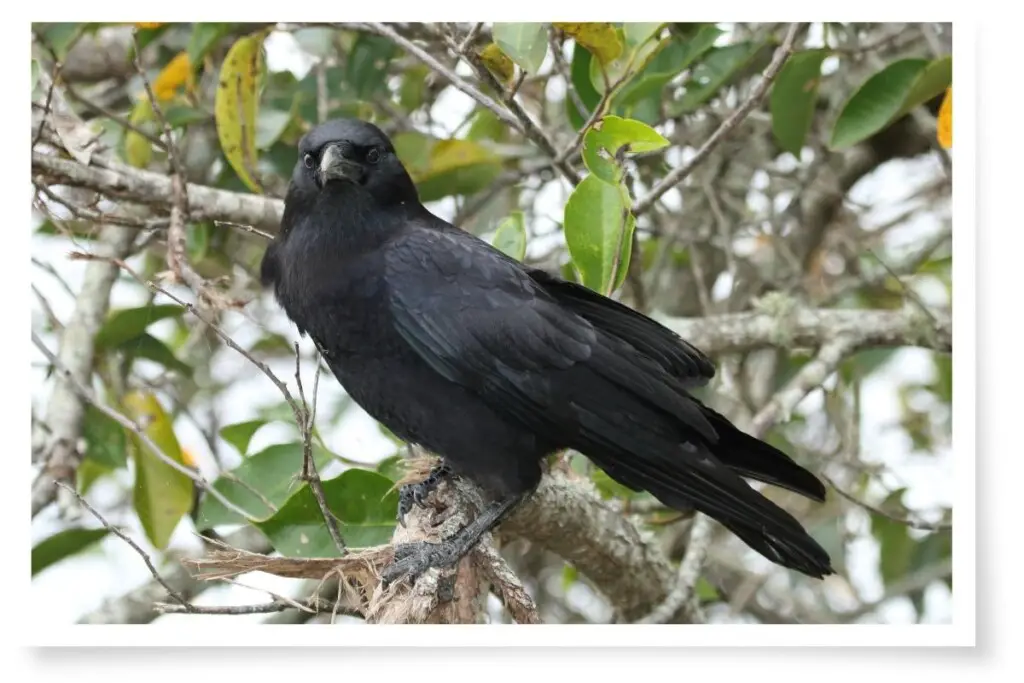
Description
The American Crow is a medium-sized bird around 43-53 cm (16.9-20.9 in.). They are often confused with the Common Raven, however, Ravens are larger and have a different shape to their head and beak.
Discover how to identify crows, ravens, and blackbirds in this article here on my blog.

Calls
You may already be familiar with the call of the American Crow. It is not perhaps the most beautiful of bird calls but nevertheless, it is unique and a common sound in all New England states.
‘Barking’ Call
‘Caw-caw’ Call
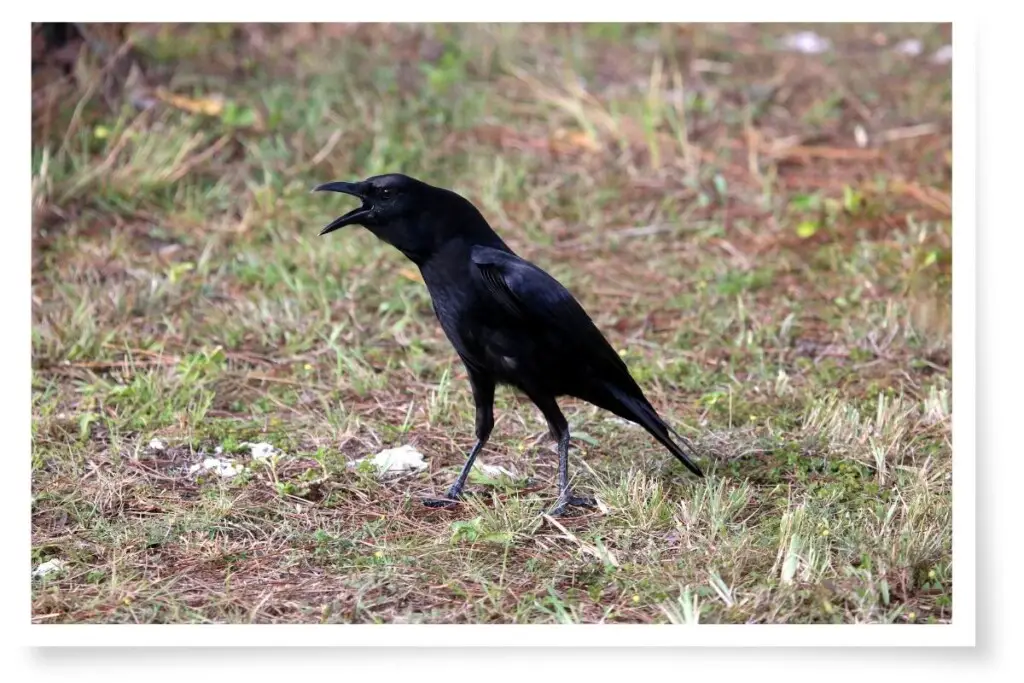
American Crows are not just limited to their signature “caw-caw” sounds either, they have around 20 different calls.
One of the other calls they will do is a kind of rattle or clicking sound that almost resembles someone playing a washboard or castanets:
The American Crow is also a skilled mimic and will copy the calls of Barred Owls and Geese. They will even copy dogs, cats, and even human sounds too.
Time Of Day They Are Heard
American Crows will be most vocal during daylight hours. They often congregate in large groups of hundreds or even thousands of birds and make a huge racket.
Their caws can often be heard at night also which some superstitious people think is a bad omen, warning of approaching bad luck, disease, and even death.
2. American Goldfinch
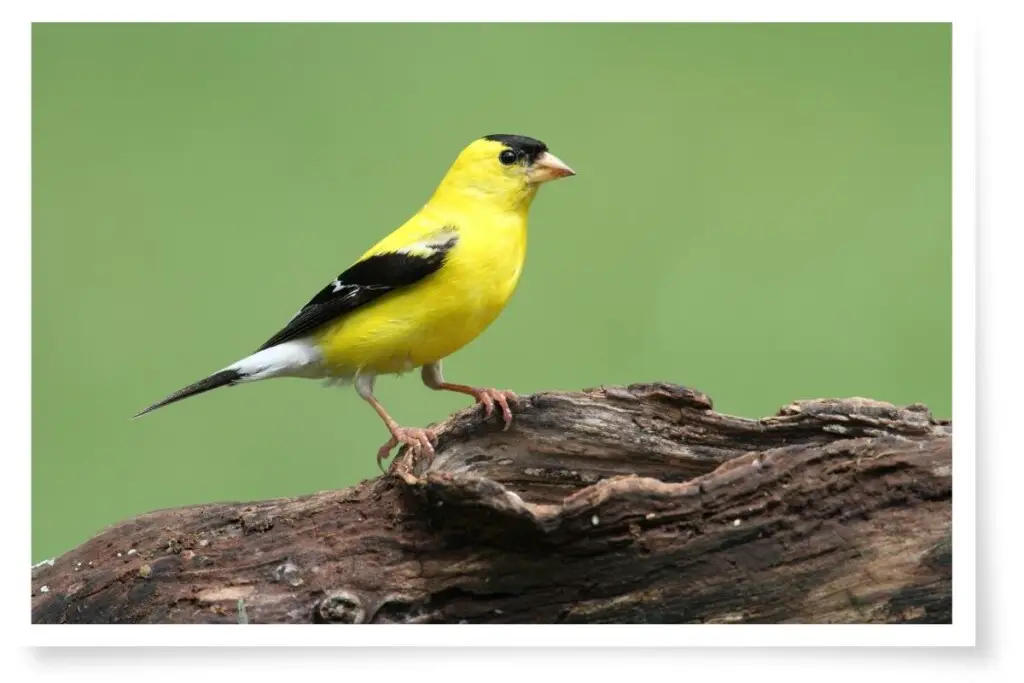
Description
The American Goldfinch is a stunning little yellow, black and white bird. They are around 11.4-12.8 cm (4.5-5 in.) from the tip of the beak to the tip of the tail.
These birds are very abundant and widespread across much of North America.
Calls
American Goldfinches have 6 different vocalizations. Their song is a widely varied series of warbles that can last from 0.5 seconds up to 20 seconds.
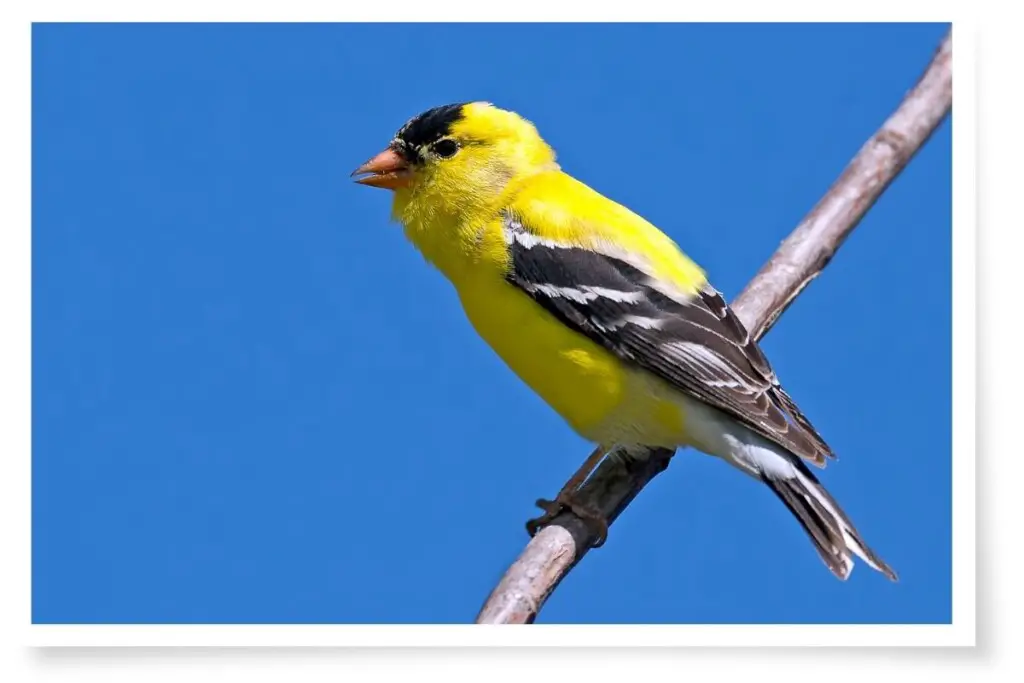
Listen to some of the amazing sounds this bird can make below:
Song
Song Example 2
Attract more birds to your yard with the great birdbath ideas in this post here on my blog.
Alarm Call
Flight Call
Fledgling Begging Calls
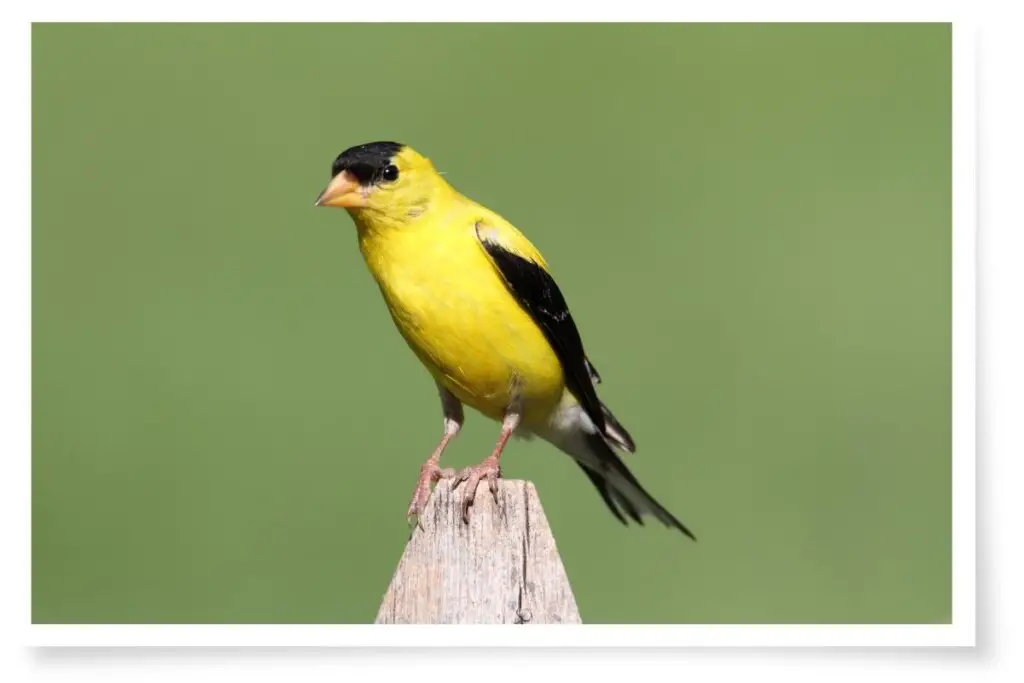
Time Of Day They Are Heard
You will hear American Goldfinches during daylight hours. They will feed mostly at dawn and dusk, so they will be more active at these times.
They will only make sounds at night to warn of a predator.
Discover 20 common small American birds in this article here.
3. American Robin
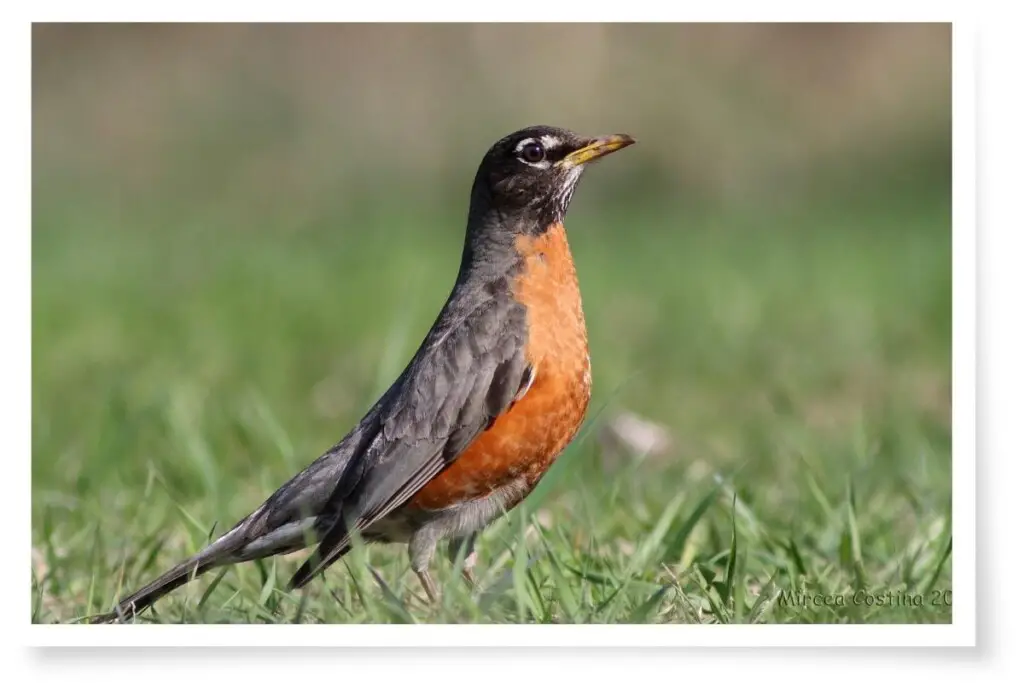
Description
The American Robin is one of the most recognizable birds in North America. On average, they are around 25 cm (9.8 in.) in length, making them the largest Thrush in North America.
These birds are deep-gray to dark brown on their upperparts with a black head. They have white patches around their eyes and white throats that are streaked with black.
Their most recognizable feature is their stunning rufous-colored chests and bellies.
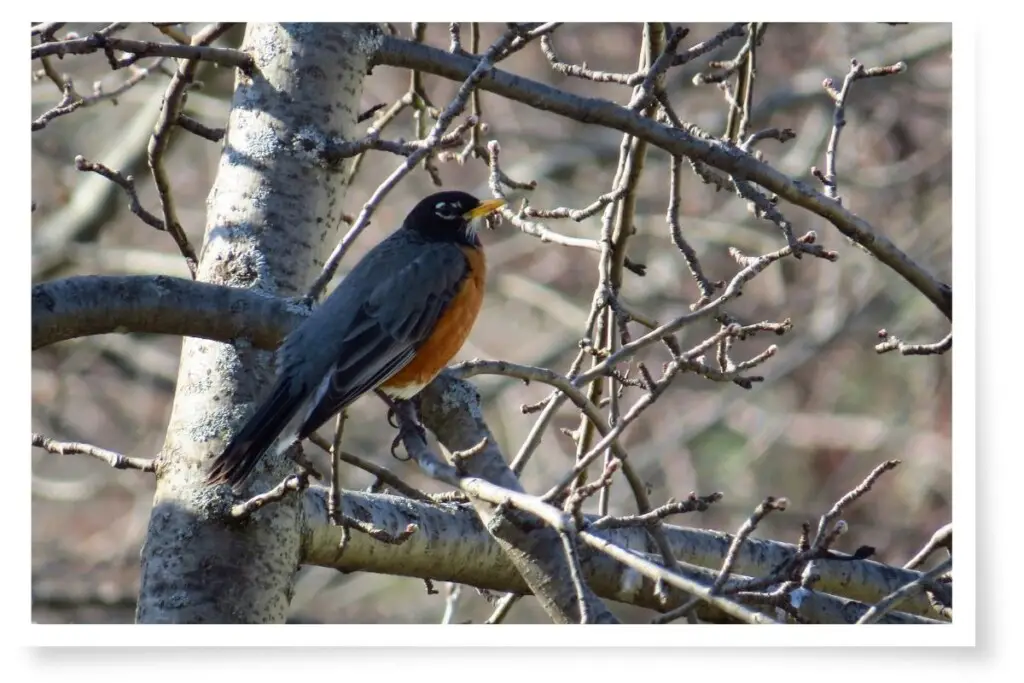
Calls
American Robins have a beautiful and varied range of calls. Even if you did not know it, you have most probably heard the call of the American robin at some point in New England.
Song
Alarm Call
Song Example 2
Time Of Day They Are Heard
American Robins are one of the first birds you will hear in the morning and one of the last to sing in the evening. They will sing the least close to noon.
The average start time of singing for these birds in Boston, Massachusetts is 3:04 AM?!
4. Bald Eagle

Description
The majestic and powerful Bald Eagle. The national emblem of the United States.
They are the second-largest American bird of prey at a massive 71-96 cm (28-37.8 in.) in length.
The Bald Eagle is unmistakable with its brilliant white head and tail feathers. They do not develop the white areas until adulthood and can be hard to identify during the various stages of growth.
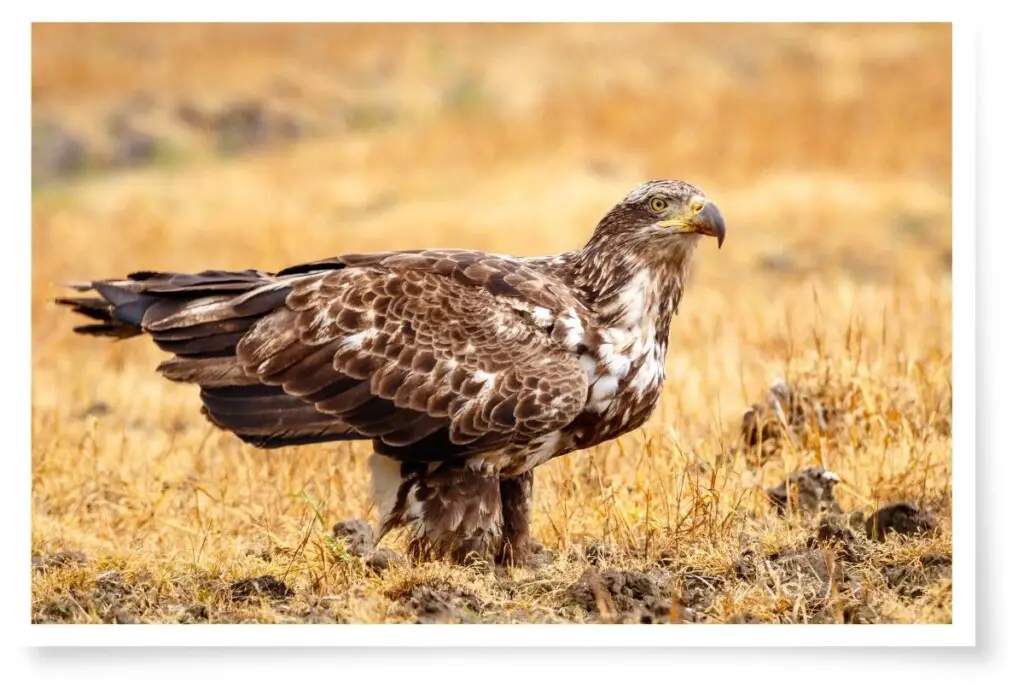
Calls
Bald Eagles have 3 distinctive types of calls:
- A “wail” – the screeching call we generally associate with bald eagles
- A “peal” – a gull-like cry
- A chatter call
Wail Call
Peal Call (with chatter)
Chatter Call
Time Of Day They Are Heard
Bald Eagles will vocalize at almost any time, however, they are mostly quiet at night.
5. Barred Owl

Description
The Barred Owl is a large, gray-brown woodland owl. They are around 43-50 cm (16.9-19.7 in.) in length.
They have round heads with large facial discs and a dull yellow bill.
Calls
Barred Owls are more vocal than most other northern-temperate owl species and have a variety of different calls.
Their most common call is often described as sounding like “Who cooks for you? Who cooks for you all?” This is the first call you can hear below:
Two-phrase Hoot
Male and Female Duet
Ascending Hoot
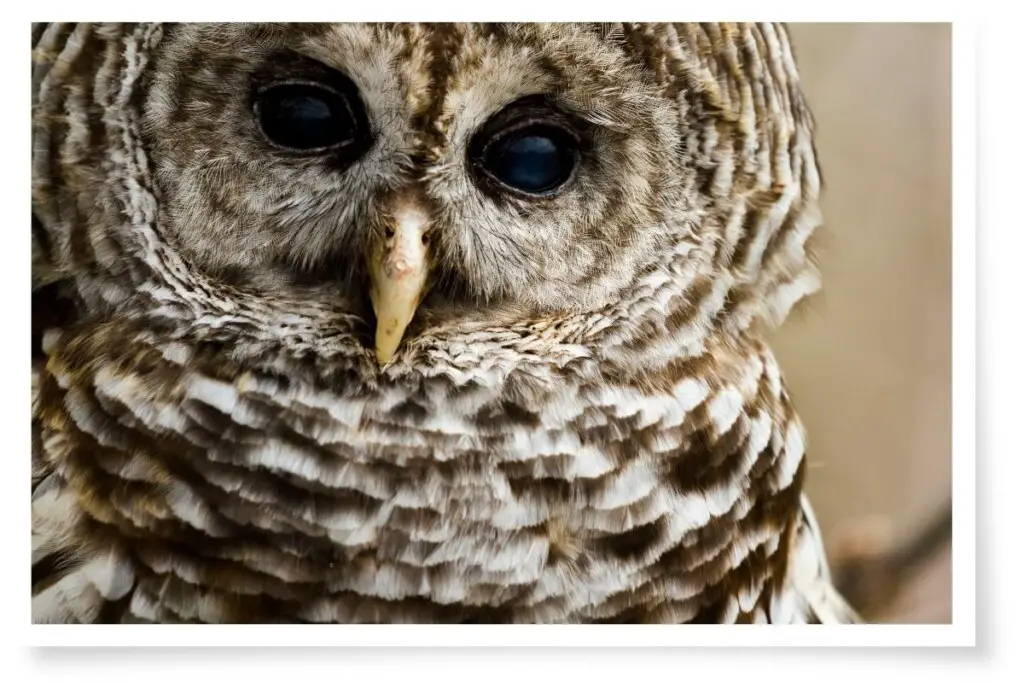
Time Of Day They Are Heard
Barred Owls will vocalize during the day and at night, though they will be more vocal during the night.
6. Black-capped Chickadee
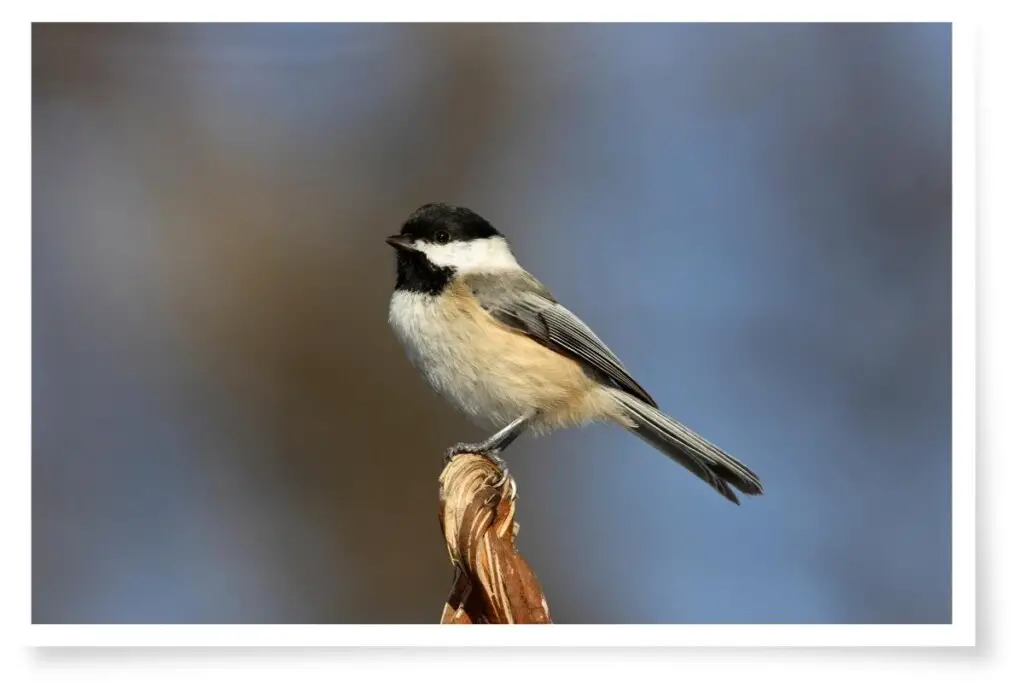
Description
One of America’s cutest feathered residents. The Black-capped Chickadee is one of the most familiar and widespread birds in North America.
They are small birds at just 12.3-14.6 cm (4.8-5.7 in.) in length. Their distinctive black cap is underscored by a white stip stretching across their cheeks to their beak and black bib.
On their backs, black-capped chickadees are greenish-gray. Underneath, they are white with rusty-brown flanks.
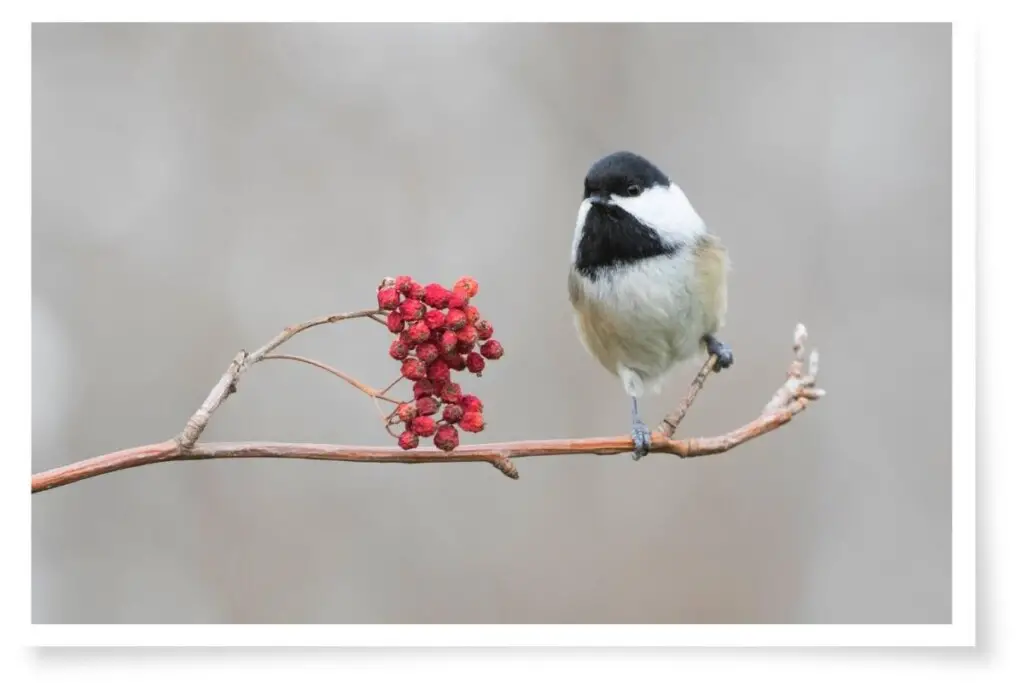
Calls
Chickadees’ vocalizations have been studied and declared to be one of the most sophisticated systems of communication of any land animal.
Below are just a small selection of black-capped chickadee calls:
“Chicka-dee-dee-dee” Call
Call Example 2
“Fee-bee” Call
Time Of Day They Are Heard
Black-capped Chickadees are very active in the morning and will be most vocal during this time. They will be quietest during the middle of the day.
They will vocalize at night with alarm calls to warn others about predators. Their alarm calls are the signature “chicka-dee-dee-dee” but will contain more “dees” depending on the size and proximity of the predator.
7. Blue Jay
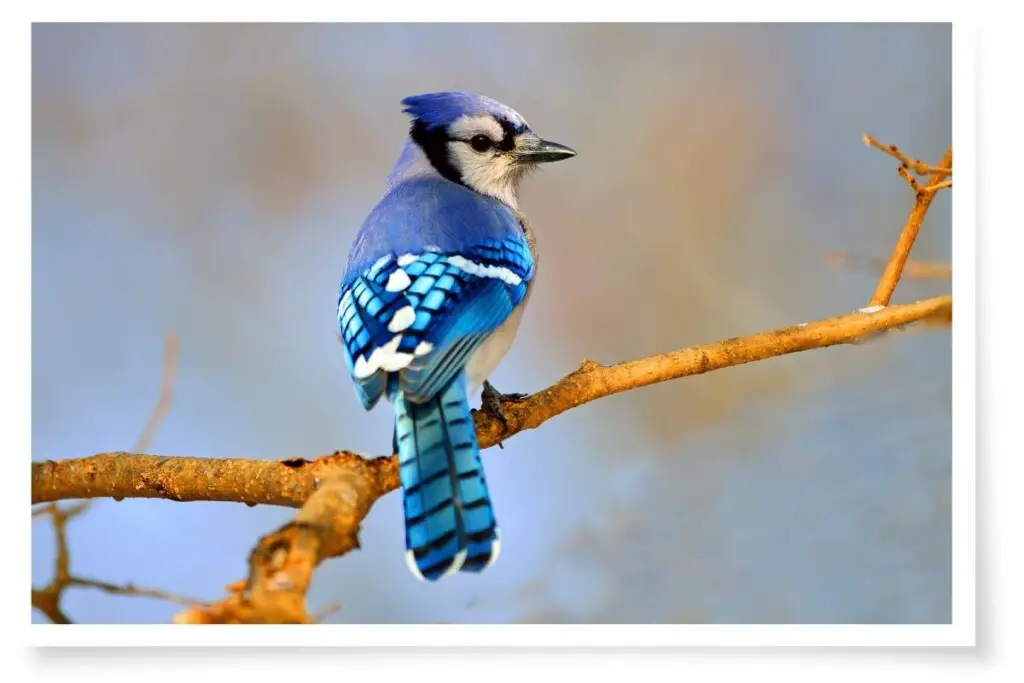
Description
The Blue Jay is yet another year-round visitor to New England. Around 25-30 cm (9.8-11.8 in.) in length with upperparts various shades of stunning blue crossed by bars of black and white.
Their faces are black and white and they have that prominent blue crest on their heads.

Calls
Blue Jays have an extensive range of calls that is so immense it is in fact impossible to categorize.
Below are some of the commonly heard calls of the Blue Jay:
Call Example 1
Call Example 2 (alarm call)
Call Example 3
Blue Jays are also skilled mimics and can copy the calls of the Red-shouldered Hawk, Broad-winged Hawk, Cooper’s Hawk, Osprey, American Kestral, Fish Crow, and Eastern-screech Owl.

Time Of Day They Are Heard
Blue Jays have been known to vocalize before dawn and can be heard throughout the day. There has not really been a lot of studies done on their vocalizations as they are so incredibly varied.
The latest time on a recording from Xeno-Canto is 7:32 PM on July 1st in Tenessee which was before sunset. I am certain they would make sounds during the night if frightened by predators.
8. Brown Creeper
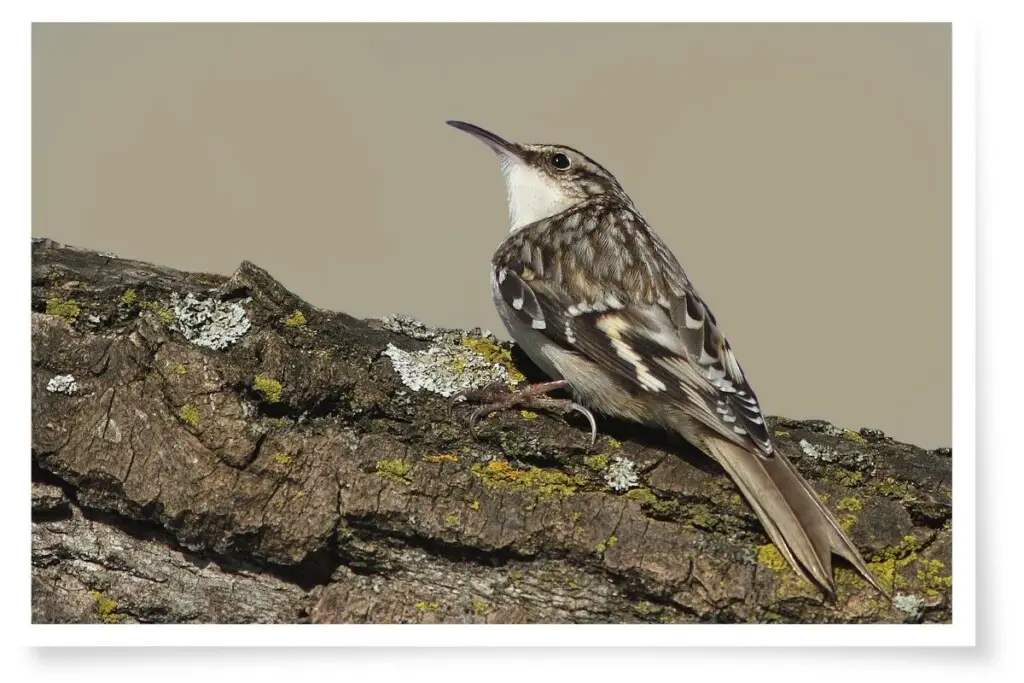
Description
The Brown Creeper is the only Treecreeper in North America and is not easy to find due to its brown, mottled coloring and high-pitched calls.
They are very small birds; the males measure 12-13.5 cm (4.7-5.3 in.), and the females are just 11.7-13.2 cm (4.6-5.2 in.) in length.

Calls
The call and song of the Brown Creeper are high and thin, many tones of which are easily missed by human ears.
Song
Call
Song Example 2
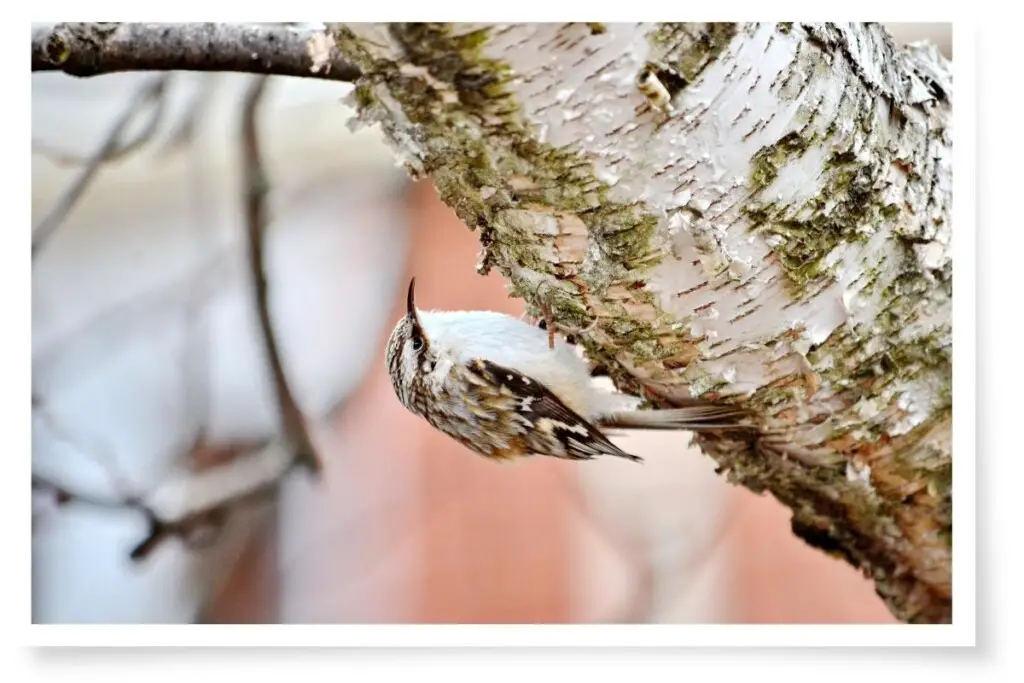
Time Of Day They Are Heard
Brown Creepers do not appear to have a dawn chorus. Male birds have been observed singing as early as 4 AM.
All the recordings on Xeno-canto are between 5 AM and 8:10 PM, suggesting that these birds are relatively quiet during the night.
According to the Cornell Lab’s Merlin App, Brown Creepers are absent from Rhode Island between July and mid-September.
9. Canada Goose
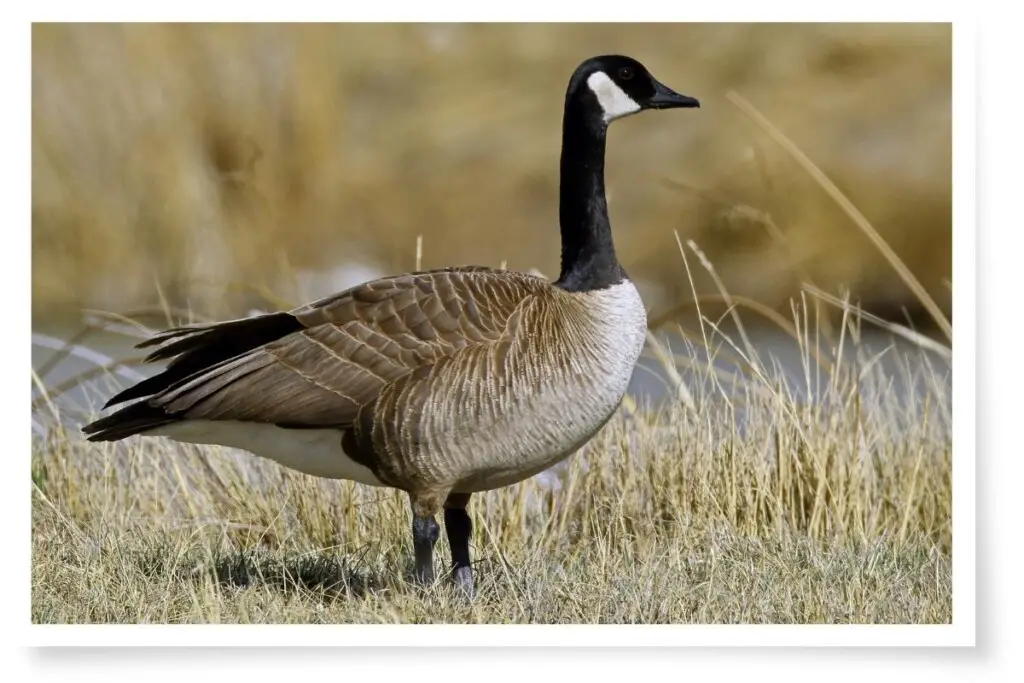
Description
Canada Geese are the most widely distributed geese in North America and are found throughout New England. They are large birds around 90-115 cm (2.9-3.8 ft) long.
Their most stand-out feature is their black heads and necks with those white chinstraps. The remainder of their body is greyish brown in varying shades.

Calls
The call of the Canada Goose is pretty much what you would expect, a typical goose “honking” sound. However, 13 different calls have been identified in these birds, proving they are not just another boring goose.
Alarm Call
Barking-type Call
Duet Call

Not that it is technically a “call” as such but Canada Geese will hiss at humans or other animals that get too close as can be heard in the following recording:
Hissing
Time Of Day They Are Heard
Canada Geese can be heard at pretty much any time of the day, there is no predictable pattern to their calls.
As they are migratory birds, they can often be heard at night while flying to a new location.
10. Cedar Waxwing
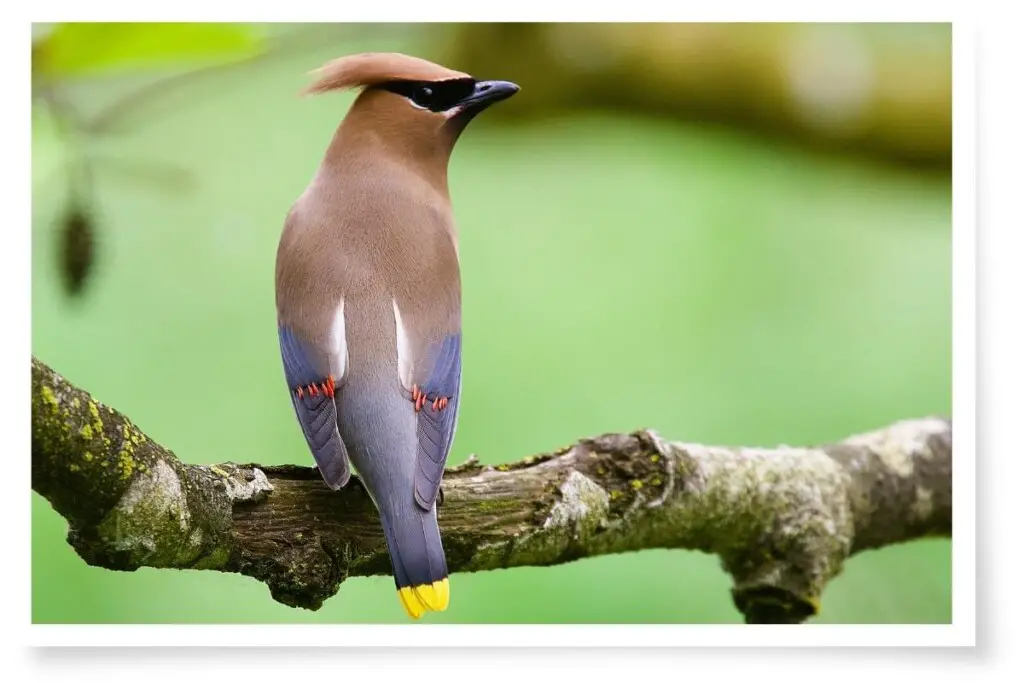
Description
The Cedar Waxwing is a stunning and unique bird around 15.5 cm (6.1 in.) in length. They are a common bird, seen in all New England states, all year-round.
Cedar Waxwings have grey-brown plumage, a striking black mask edged with white, and a brilliant crest that resembles a tuft of swept-back hair.
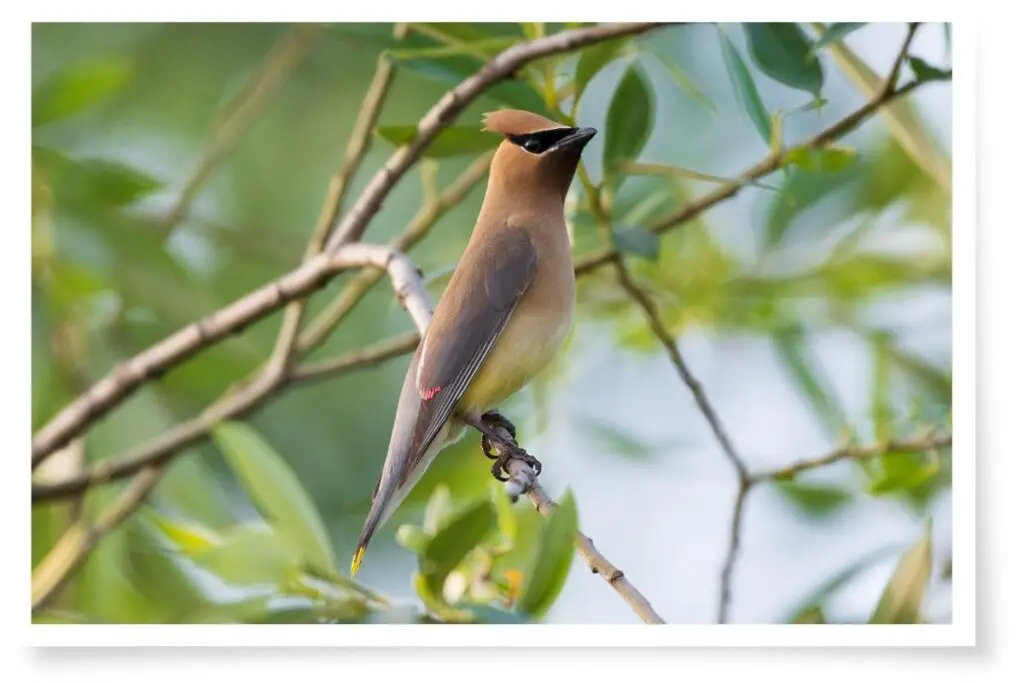
On the tips of their primary wings, they have red, wax-like “droplets” which is how they earned the name waxwing.
Their tail feathers are tipped with brilliant yellow and they also have yellow bellies.
Calls
The call of the cedar waxwing is much like the sound of crickets chirping at dusk.
Chirping Call
Whistle-type Call

Time Of Day They Are Heard
Cedar Waxwings can be heard anytime between dawn and dusk. They are generally quiet at night unless disturbed by predators.
Other Articles In This Series
References
- Bird information – birdsoftheworld.org
- All bird sounds – xeno-canto.org
